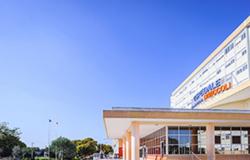The innovative use of artificial intelligence at the Policlinico di Bari for research projects and support for diagnostic imaging was presented by the general director, Antonio Sanguedolce, during a round table at the Laboratorio Sanità 20/30, which ended yesterday in Udine. The event held at Villa Manin brought together national and European experts, public and private managers, institutions, and healthcare professionals to share and evaluate opportunities and risks in the application of AI to healthcare.
“Artificial intelligence applied to healthcare promises to revolutionize the way we prevent, diagnose and treat diseases. It is therefore essential to immediately address essential regulatory issues, such as aspects of medical-legal liability or the acceptability of new diagnostic systems by doctors and patients,” highlighted DG Sanguedolce in his speech. Three projects from the Policlinico were presented, two research projects and one application in the clinical practice of radiodiagnostics. In the university internal medicine operating unit “Baccelli”, Prof. Angelo Vacca started during the pandemic by conducting a study to recognize the typical signs of interstitial pneumonia from Covid-19 thanks to the use of algorithms based on artificial intelligence. The results could be useful today to investigate the pulmonary status of patients early.
The second research project in the internal medicine operating unit “Murri”, directed by Prof. Piero Portincasa, concerns the use of AI in the early identification of hepatic steatosis through rapid ultrasound scans of the liver. While artificial intelligence software can be activated in the radiodiagnostic operating unit with a focus on breast cancer, directed by Prof. Marco Moschetta, to support the differential diagnosis between benign and malignant lesions in breast ultrasound and tomography scans. “We firmly believe that, with adequate regulation and continuous training, these technologies can be a valuable ally in optimizing the management of clinical pathways and improving the provision of health services”, concluded Antonio Sanguedolce.






